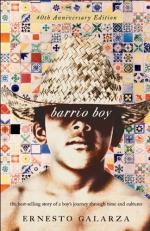
|
Introduction and Part One, Section 1 (through page 6)
1. What kind of stories does the narrator say he tells his family?
(a) Tales of Mexican mythology.
(b) Proverbs that he learned from his mother.
(c) Anecdotes about the village where he was born.
(d) The story of the freedom of Central America.
2. What is suggested after the author's stories circulate at a scholarly meeting?
(a) That he make a movie.
(b) That he stop telling stories.
(c) That he speak at more scholarly meetings.
(d) That he write a book.
3. According to the author in Section 1, what is the historical importance of the story?
(a) That many other families also migrated to the United States.
(b) That the story talks specifically about human rights.
(c) That it is important because it is the story of his life.
(d) That the story covers never before heard history.
4. According to the author in Section 1, what is the psychological importance of the story?
(a) The desire to communicate his confidence in his self-image as a Mexican immigrant.
(b) That the story communicates the equality of all humans.
(c) The fact that this story could help others overcome tramatic experiences.
(d) That the story sheds light on the pysche of adolescents.
(read all 180 Multiple Choice Questions and Answers)
|
This section contains 4,489 words (approx. 15 pages at 300 words per page) |

|




